








MIDWEEK UPDATE 1 DECEMBER 2022Google Banner Ad 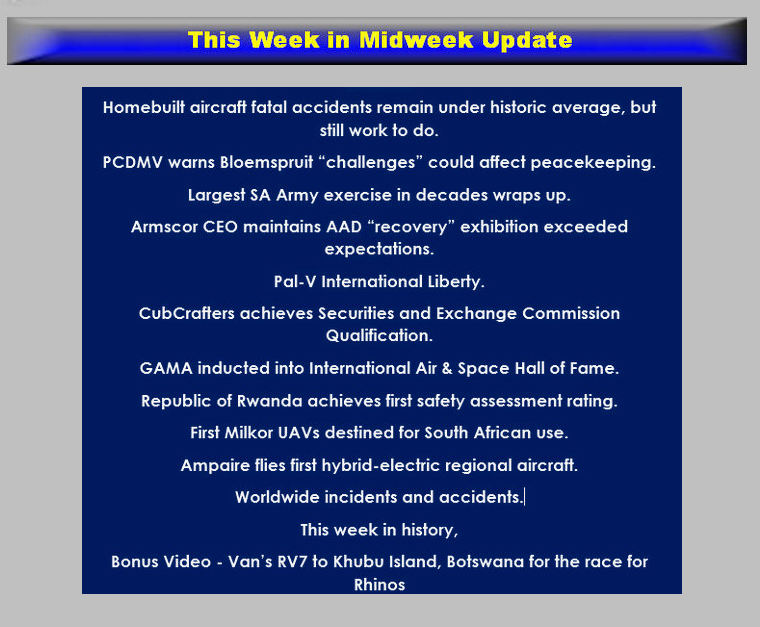    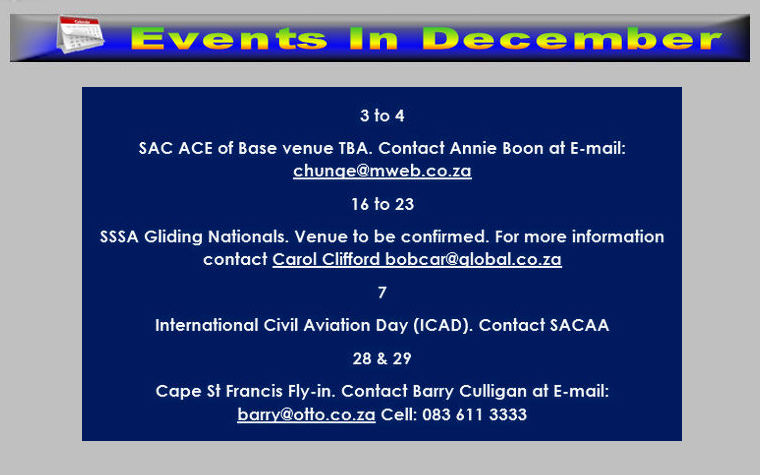  HOMEBUILT AIRCRAFT FATAL ACCIDENTS REMAIN UNDER HISTORIC AVERAGE, BUT STILL WORK TO DO. Fatal amateur-built aircraft accidents remained under the historic average over the 12-month period ending in September 2022, but the Experimental Aircraft Association notes that an uptick over the previous year's total shows that focused efforts to enhance safety even further remains essential.  "The fatal accident totals, for both amateur-built and experimental aircraft overall, remain 30 to 35 percent below where they were just a decade ago, including when looking at the three-year rolling average on which the FAA bases its annual not-to-exceed number," said Sean Elliott, EAA's Vice President of Advocacy and Safety. "While that's good news, we never want to see an annual increase in the totals. That's a reminder that we all must continue to work to make safety the top priority even with the small numbers we see each year." The higher accident totals in experimental category aircraft mirror an increase for all of general aviation over the same 12-month period. This also coincides with preliminary figures that show an increase in flight hours in 2021 and into 2022. "EAA has been deeply involved in FAA's safety analysis teams for several years and we consistently see that experimental aircraft accident causes are very similar to accident causes for all GA accidents," Elliott said. "It shows that the accidents overwhelmingly do not occur because a pilot is flying an amateur-built or experimental aircraft, but because of factors relating to pilot decision making or flight procedures. Those are areas where EAA safety programs and resources can make a difference."  www.defenceweb.co.za  Air Force Base (AFB) Bloemspruit could well be a microcosm of the SA Air Force (SAAF) based on what Parliamentarians saw and was told during an oversight visit. The parliamentarians, all members of the Portfolio Committee on Defence and Military Veterans, are visiting military facilities and bases in and around the Free State capital Bloemfontein this week. Their visit also saw them call on the local office of the Department of Military Veterans (DMV) and personally see sites where houses have and will be built for old soldiers. The Bloemspruit base shares a runway with Bram Fischer International Airport and is home to 16 Squadron and its Rooivalk combat support helicopters as well as 87 Helicopter Flying School. When it comes to "challenges" the major ones, a Parliamentary Communication Service statement has it, are an "inability to service helicopters", "unavailability of spares" and "a lack of machinery to maintain hangers (sic) and runways". The quotes are those of the unnamed base Officer Commanding who also reported, "tedious procurement and administrative policies" leading to "inefficient running of the base", to his high-level visitors. In response, the statement has PCDMV co-chair Cyril Xaba saying: "Funding of the [SA] National Defence Force remains unresolved. If a solution is not found it could spell disaster for the safety and security of the country." Tying the situation at Bloemspruit to regional security the statement reports Xaba saying South Africa's role in the security of the Southern African region is "crucial". "If the country fails to service its prime defence equipment it could result in South Africa not being considered for peacekeeping missions."  The ripple effects of strikes and industrial action by workers was brought forcibly home to the parliamentarians who heard Bloemspruit experienced diesel and other fuel shortages during a truck drivers' strike earlier this year. The committee noted with concern that due to operational issues, the base "suffered" during the truck drivers' strike which left it with" less diesel and fuel stocks". The committee recommends better management systems to ensure fuel stocks are sufficient "as fuel is an essential component for air force operations to protect South African airspace".  Guy Martin www.defenceweb.co.za 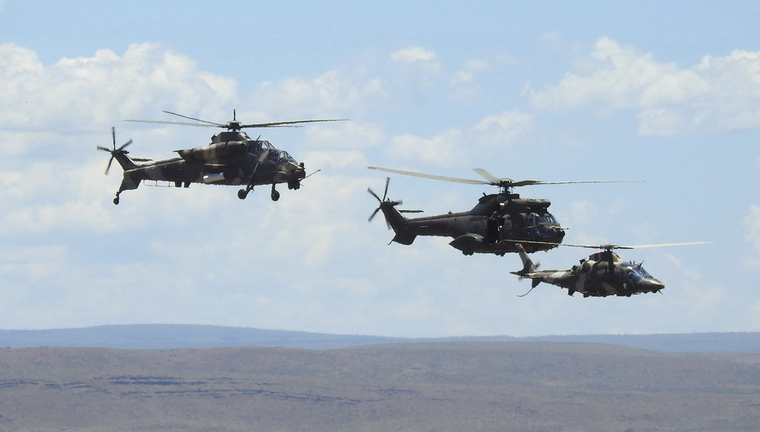 More than 13 000 troops have taken part in the South African Army's Exercise Vuk'uhlome at the Combat Training Centre in the Northern Cape, with the landmark exercise showcasing the capabilities of the five newly formed Modern Brigades. The military's new camouflage uniform was also revealed for the first time. The South African Army said the divisional exercise is the largest executed since 1999 and showcased the capabilities of the newly formed Motorised, Mechanised, Airborne, Light, and Reserve Modern Brigades. The new brigade formations are designed and set up to respond to modern threats such as asymmetric warfare and were established in response to the current security situation. The modern brigade concept is cognisant of asymmetric and terrorism threats to South Africa. Vuk'uhlome ('rise and arm yourself' in Zulu) tested the capability and status of readiness of the landward force, supported by SA Special Forces, the SA Air Force (SAAF), SA Military Health Service (SAMHS), Military Police Division and Legal Services Division. Numerous capabilities were demonstrated during the exercise's Distinguished Visitors' Day, ranging from dealing with civil unrest to dropping airborne forces by parachute, precision rocket and artillery attacks, counter-insurgency operations, infantry attacks etc. The Special Forces and their weapons and vehicles played an important role in the simulated battle, which witnessed the involvement of armoured vehicles including Olifant main battle tanks. The SA Air Force supported the exercise with Cessna Caravan and C212 transport aircraft along with Oryx and A109 transport/utility helicopters and a Rooivalk attack helicopter. The latter did not fire its weapons, but two Hawk Mk 120 lead-in fighter-trainers dropped bombs on the Lohatla range. .jpg) The exercise culminated in the handing over of the SA Army's state of combat readiness by Army Chief Lawrence Mbatha to the Chief of the SA National Defence Force (SANDF). Addressing SANDF members and invited guests, Modise said that Exercise Vuk'uhlome is an indication of the preparedness and readiness of the military to protect South Africa. She said the Department of Defence intends to rejuvenate the SANDF and remove obstacles that inhibit its progress. This includes ensuring equipment is in good condition and that discipline prevails. The SANDF is badly affected by massive underfunding compounded by a growing list of duties, as well as ageing equipment - it is not clear when it will be receiving its new Badger infantry fighting vehicles from Denel, but the SA Army has acquired some new hardware in recent years, some of which was on display during Exercise Vuk'uhlome. Recent acquisitions include sniper rifles from Truvelo, 40 mm grenade launchers from Milkor, Carl Gustaf recoilless rifles from Saab, Land Cruiser-mounted ZSU-23-2 anti-aircraft gun vehicles and Scorpion 60/80 mm mortar vehicles. Another new addition was the SANDF's new camouflage uniform, which was officially launched during Exercise Vuk'uhlome. Designed to replace the 'old fashioned' uniform that does not cater for African or female body profiles, it was developed in conjunction with the Council for Scientific and Industrial Research (CSIR). Mbatha said the new uniform would help soldiers to better blend in with their surroundings on deployments and that the new uniform will be rolled out across the defence force in stages. Commenting on the capability and equipment of the South African National Defence Force, Modise told her audience on Thursday that, "I am confident we are doing everything in our power to ensure prime equipment is restored and upgraded…Those who think the Army is in decline are wrong. I have every confidence the SANDF can protect South Africa and its economy." The minister added that the Department of Defence is looking to reinvigorate the local defence industry. A sizeable defence industry exhibition formed part of Exercise Vuk'uhlome, with more than half a dozen companies exhibiting their wares. This included Reutech (radars and weapon turrets), Canvas and Tent (field accommodation), Rheinmetall Denel Munition (green energy), Global Command and Control Technologies (command and control solutions), Dinkwanyana Aerospace (unmanned aerial vehicles), OTT Solutions (armoured vehicles, including their Ratel Service Life Extension demonstrator) and Denel. The latter showcased its Badger and RG41 infantry fighting vehicles, RG21 and RG31 armoured personnel carriers and T5-52 self-propelled howitzer. SVI Engineering brought two of its armoured vehicles to the exhibition area (Max 3 and Max 9). The company has also supplied Scorpion mortar vehicles to the SANDF, but these were not used in the exercise. Another highlight of the Exercise Vuk'uhlome Distinguished Visitor's Day was the launch of a new publication showcasing the role of the SA Army, its recent achievements and its structure and organisation. The 178-page coffee table publication is entitled 'South African Army 2022-2022: Maintaining Momentum Despite Adversity.'  Guy Martin www.defenceweb.co.za  With what was dubbed the "recovery show" done and dusted, the focus is now on the not-too-distant horizon that is September 2024. That's when the next Africa Aerospace and Defence (AAD) exhibition will be centre stage at Air Force Base (AFB) Waterkloof, hosted by Armscor. Looking back on this year's AAD, hosted by AMD (SA Aerospace, Maritime and Defence Industries Association), as well as some crystal ball gazing, Armscor chief executive Solomzi Mbada writes in the defence and security acquisition agency's latest newsletter that AAD 2022 "exceeded all expectations". This was evidenced by "positive participation in both the exhibition and air show across categories including exhibitors, trade visitors, foreign delegations, air forces and the general public". Coming in the wake of the unfortunate but necessary postponement brought on by the COVID-19 pandemic, AAD 2022 was "a showcase of the indomitable human spirit to recover and re-emerge stronger". "Armscor, together with our partners, are proud to have hosted the 11th edition of AAD from 21 to 25 September at AFB Waterkloof. It is the biggest defence and aerospace exhibition on the African continent and has - over the years - provided a platform for the unveiling of cutting edge technologies."  "The exhibition brings together key role players in the aerospace and defence industries to showcase capabilities and demonstrate expertise in providing solutions to complex problems. It plays a significant role in boosting the local economy through the South African Defence Industry (SADI) and allows local industry to benchmark itself against global counterparts and competitors." This publication received comment from exhibitors and visitors with both positive and negative messages for exhibition organisers to take note of. Missing this year was the exhibition catalogue with a number of people pointing out it remained a handy reference "long after" AAD was over. It was subsequently published on the AAD website and can be found here. defenceWeb also received comment about the "extra-wide" passages between indoor exhibition stands with one saying "it made movement easier, but showed there were fewer exhibitors than previously". Retired SA Air Force (SAAF) officers - to a man - said it was "good to see Gripen flying" at the air show. This after a more than 12 month grounding of the South African Air Force's Swedish-built jet fighters pending contractual agreement for maintenance. Another air show highlight was in-flight refuelling of a US Air Force (USAF) Sikorsky HH-60 Pave Hawk from a HC-130J Super Hercules.  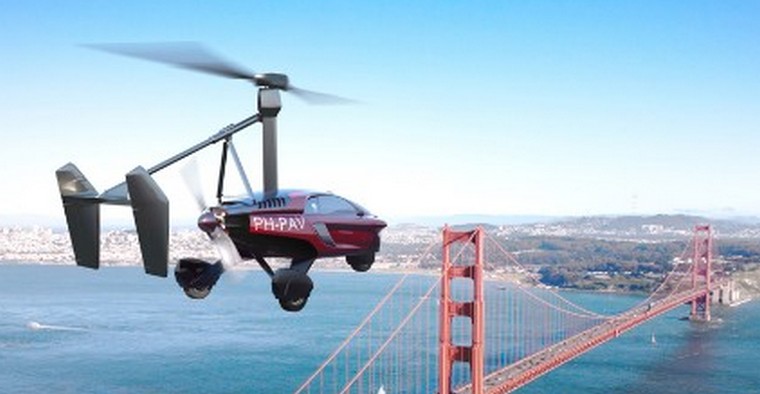 The initial idea a Personal Air and Land Vehicle (PAL-V) happened when the Co-Founder John Bakker started flying in 1999. Then in 2008 the company PAL-V (Personal Air and Land Vehicle) was founded by Robert Dingemanse and John Bakker in The Netherlands and began to design a roadable aircraft. The first flight of PAL-V International's proof-of-concept prototype was in 2012. Currently, PAL-V International is finalising the development of the PAL-V Liberty model which is scheduled in production in 2020. The PAL-V vehicle can drive on the road and can fly. In flight, PAL-V is an autogyro or gyrocopter and on the road, it's a car. The aircraft is intended for flying within a city or for city-to-city flying. The main focus of the PAL-V is for personal air mobility. The Pal-V Liberty Sport model was first unveiled at the Geneva International Motor Show held 18 March 2018. A new production model, the PAL-V Liberty Pioneer, was unveiled on 5 March 2019 at the Geneva International Motor Show (GIMS) held during 7-17 March 2019, in Geneva, Switzerland. It can park in any parking space or garage. It is certified to fly under both the European Aviation Safety Agency (EASA, European Union - 28 member states) and the Federal Aviation Administration (FAA, USA) and complies with road safety regulations. The PAL-V aircraft holds two (2) passengers and the pilot need to have a pilot's license and a driver's license to fly/drive the PAL-V aircraft. One needs to land or take off at an airfield or small strip of land. It takes between five to 10 minutes to switch from driving to flying mode and vice versa. There are two separate engines, one for flight and one for the car mode. "The Pioneer Edition is for those that want to be part of a unique group that writes history with us. They will be at the forefront of a mobility revolution, where we will no longer have cars that can only drive. They will be the first car-flyers in their country, Fly/Driving to any destination." Robert Dingemanse, PAL-V CEO.  CubCrafters, the leading designer and manufacturer of Light-Sport, Experimental and Part 23 Certified backcountry aircraft, announces today it has been qualified by the Securities Exchange Commission [SEC] to make a $50 million public stock offering using the Regulation A+ exemption, which allows for the first outside investment ever in the history of this iconic company. Advised by Manhattan Street Capital, CubCrafters intends to raise up to $50 million in investment capital from its fans, customers, aviation enthusiasts, the investment community and the general public. The offering price for first round investors is $5 per share, with a minimum investment of only $400 per investor. Those interested in this unique opportunity can learn more about the company and participate in the investment at: www.manhattanstreetcapital.com/cubcrafters "We are humbled and excited by the overwhelming interest and investor demand our capital raise received. In just 90 days, we received reservations for more than $25 million of CubCrafters' shares," said Patrick Horgan, CubCrafters' President & CEO. "This was a great first step in securing the vision of our founder, Jim Richmond, who wanted to give the public an opportunity to participate in the growth of our company. Now that we have been qualified by the SEC, we look forward to welcoming new investors to CubCrafters and working on their behalf to drive long-term shareholder value." The high demand for CubCrafters aircraft has resulted in a more than 2-year backlog of orders. The proceeds of the offering will be used to increase manufacturing capacity and reduce new aircraft customer delivery times. The company will also make investments in growing its customer support capabilities and accelerating product innovation. All of which will enable the company to expand its reach in the rapidly growing domestic and international markets for both adventure and utility aircraft. While many US-based general aviation aircraft manufacturers have been sold to foreign entities, CubCrafters intends to remain American owned and operated. The entire line of CubCrafters aircraft is designed and produced in the company's facilities in Yakima, WA. To keep it that way, CubCrafters is leveraging this Regulation A+ offering to fund growth while keeping the company US-based. "We have invested large amounts of time, energy, and resources to qualify a Reg A+ offering with the SEC," stated Brad Damm, CubCrafters' Vice President. "Our Brand has grown to be synonymous with an adventure lifestyle that inspires and appeals to people at all levels. We consistently hear from people across many different demographics that want to be a part of what we do, that want to join us on our journey. This offering affords that opportunity to everyone, both from within the aviation community and from the public at large." "The already significant response from investors and their large and loyal customer base is a strong testimonial to CubCrafters' role as an industry leader and to the quality of its product line," added Rod Turner, CEO and founder of Manhattan Street Capital. (*) "I am truly excited to be a part of this capital raise designed to scale up CubCrafters' future success." ABOUT CUBCRAFTERS Founded in 1980 by Jim Richmond, CubCrafters' roots are in the 80+ year history of classic grassroots aviation, but the company's products and services are innovative and completely modern. CubCrafters designs and manufactures Experimental, LSA and Part 23 Certified aircraft. The Carbon Cub family of aircraft redefined expectations for the backcountry flying experience with innovative design, modern materials, powerful engines and breath-taking performance. The company's flagship XCub aircraft is offered in both nosewheel and tailwheel configurations and substantially expands the mission profile of sport utility aircraft with higher speed, longer range and larger payload. The key to our success is our ability to create unique value in the experience of personal adventure aviation.  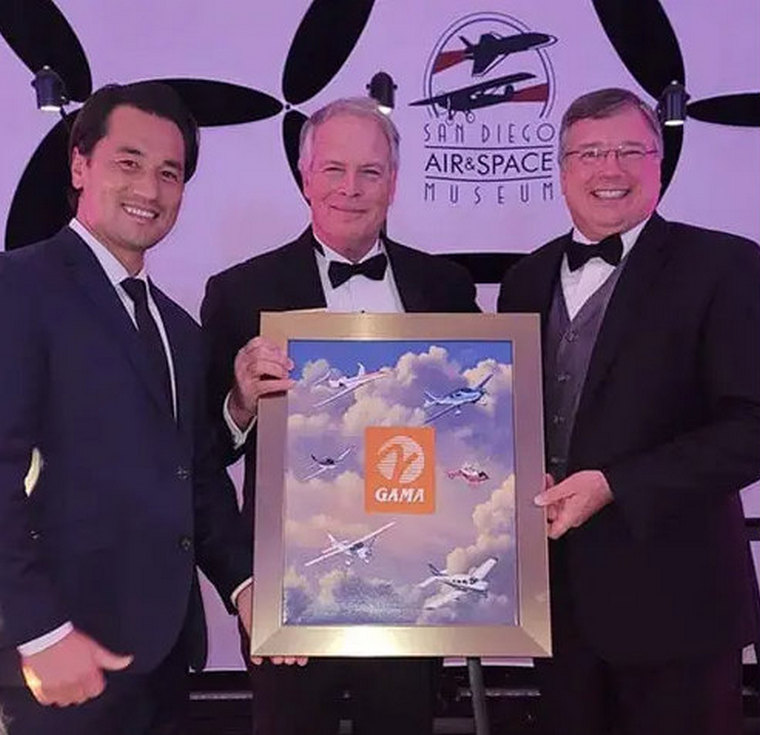 The General Aviation Manufacturers Association (GAMA) was inducted into the International Air & Space Hall of Fame as part of the Distinguished Class of 2022, during a celebration ceremony on 19 November at the San Diego Air & Space Museum. "It truly is an honour to have our global association recognised for the dedicated work our board members, company subject matter experts and the GAMA staff perform collectively to engage regulators, politicians and the safety, science and security agencies as well as executive branch leaders to advance our industry. In particular, this recognition acknowledges the forward thinking of our Board of Directors to grow our world-wide presence by opening up a Brussels office near the European Commission over a decade ago as well as expand our membership beyond airplane manufacturers to include maintenance and repair organisations, rotorcraft manufacturers and in 2016, establish an associate membership category for companies working in the emerging sector of advanced air mobility. However, the GAMA board's greatest success has been to attract, support and promote an incredibly talented staff of subject matter experts with an unmatched knowledge of the technical, regulatory and governmental processes needed to effectively work with regulators, legislators and authorities. This hall of fame induction belongs to the remarkable team I have the privilege to lead and support as they apply their incredible expertise day-in and day-out to strengthen the general aviation industry," said GAMA President and CEO, Pete Bunce. Since 1963, the International Air & Space Hall of Fame has honoured the world's most significant pilots, crew members, visionaries, inventors, aerospace engineers, business leaders, preservationists, designers and space explorers. The International Air & Space Hall of Fame Class of 2022 includes Army Aviation; Will Cutter and Cutter Aviation; the General Aviation Manufacturers Association (GAMA); Michael Herman, Aviation Professional and Philanthropist; Brian Keating, Ph.D., Chancellor's Distinguished Professor of Physics (UCSD); and Textron Aviation.   The U.S. Department of Transportation's (DOT) Federal Aviation Administration (FAA) announces that the Republic of Rwanda has achieved an International Aviation Safety Assessment (IASA) Category 1 rating, and is in compliance with International Civil Aviation Organization (ICAO) standards. The FAA IASA program focuses on a country's ability to adhere to international aviation safety standards and recommended practices. The standards are set by ICAO, the United Nations' technical agency for aviation. The FAA determined the Republic of Rwanda met requirements for the Category 1 status following a thorough review of its progress in improving its safety oversight processes. A Category 1 rating means the country's civil aviation authority complies with ICAO standards. Under a Category 1 rating, properly authorised Rwandan air carriers are permitted to serve the United States and enter into code-share agreements with U.S. carriers without limitation Through IASA, the FAA assesses the civil aviation authorities of all countries. These air carriers have either applied to fly to the United States, currently conduct operations in the United States, or participate in code sharing arrangements with U.S. partner airlines and makes that information available to the public. The assessments are based on ICAO safety standards.  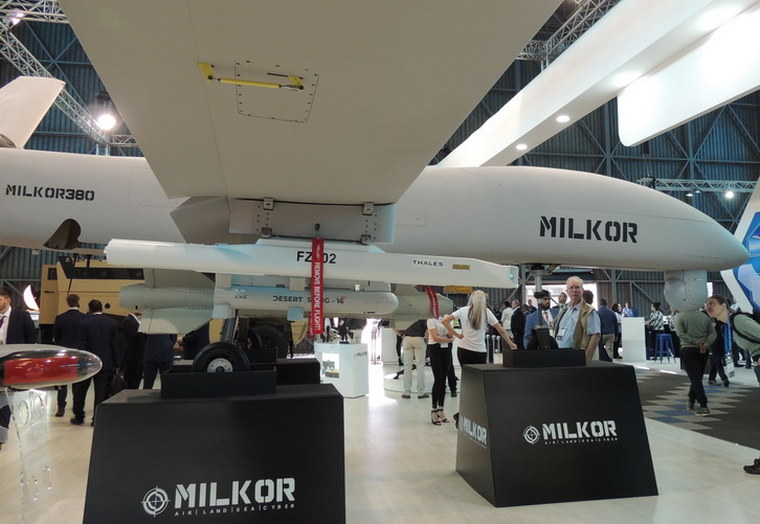 The Milkor 380 will soon make its maiden flight, with production of the Milkor's 18.6 metre wingspan Milkor 380 unmanned aerial vehicle (UAV) is the largest such aircraft to be developed in Africa and will enter production next year. As part of an agreement with the Department of Defence, the first aircraft produced will be used exclusively by South Africa. "Following a successful presentation of the Milkor 380 at the African Aerospace and Defence Exhibition in September of this year, international recognition of the Milkor 380 and its capabilities has been garnered from countries across eastern Europe and Asia," Milkor said. "During AAD, Milkor signed an MOU with the Department of Defence, Armscor and the South African Air Force illustrating their continued commitment to supply these systems and will manufacture five units during 2023 dedicated for South African use." With the company's 10 000 square metre manufacturing facility in Cape Town, Milkor will further build on local defence capabilities and continue to avail the Milkor 380 to the South African government, the company added, as it is "fully committed to building the capabilities required by various branches in the South African government by making the Milkor 380 available for use in South Africa." "Developing such a sophisticated platform in South Africa is a significant achievement for the defence industry," said Daniel du Plessis, Business Development Manager at Milkor. "Milkor has created an opportunity for the South African defence, security and intelligence sectors to source key equipment locally, eliminating the need to seek them elsewhere. It enables the South African government to reduce its reliance on foreign procurement and allows them to collaborate closely with local companies that can help build stronger defence and security capabilities, especially in the unmanned aerial vehicle (UAV) sector." Milkor said the Milkor 380 Medium Altitude Long Endurance (MALE) UAV is the largest UAV to be manufactured in South Africa and on the African continent. It has an endurance of up to 35 hours of flight time and a payload capacity of 210 kg. "These features make the Milkor 380 ideal for integrating various sensors and performing surveillance operations and intelligence gathering missions across the South African border and within the military intelligence realm," Milkor said, with UAVs able to combat issues like maritime crime, poaching, terrorism etc.  AMPAIRE FLIES FIRST HYBRID-ELECTRIC REGIONAL AIRCRAFT Ampaire's Eco Caravan, a nine-seat regional aircraft, made its first flight today on a fully-integrated hybrid-electric propulsion system. Ampaire expects it to be the first electrified regional aircraft to enter commercial service (certification in 2024) and the first in a series of larger Ampaire hybrid-electric aircraft that will lead a transition to sustainable aviation. Today's landmark achievement adds momentum to a program that has attracted key customers and program participants in recent months. In October, the company announced a relationship with Air France Industries KLM Engineering and Maintenance (AFI KLM E&M) for a range of worldwide maintenance service and support activities. Also last month, Ampaire received an order from MONTE, a financier of sustainable regional aviation technologies, for up to 50 Eco Caravans. "These types of relationships ensure that Ampaire's customers worldwide have compelling financing and leasing support alongside world class maintenance/repair/overhaul support," said Noertker. A "smooth and quiet" first flight The Eco Caravan upgrades the standard Cessna Grand Caravan with Ampaire's integrated propulsion system of a compression ignition engine and an electric engine. A battery pack in a body fairing preserves passenger and cargo capacity for the aircraft. The first flight was 33 minutes in duration to make initial checks of the propulsion system. With test pilot Elliot Seguin at the controls, the Eco Caravan took off from Camarillo Airport north of Los Angeles at 7:49AM pacific time. It climbed to 3,500 feet at full power, combining power from the combustion engine and electric engine. Seguin then throttled back to a cruise setting, reducing load on both power sources. He spent roughly 20 minutes testing various power settings while studying temperatures and other readings before making a descent and final approach to Camarillo at a low power setting. "The Eco Caravan propulsion system performed just as expected," said Seguin. "It was smooth and quiet. All temperature and power output readings were normal." Net Zero Emissions with SAF The Eco Caravan reduces fuel consumption and emissions by up to 70 percent. Emissions are near zero when using sustainable aviation fuel. Cost of operation is reduced by 25 to 40 percent depending on airline route structure. Cost per available seat mile is near that of driving. The hybrid-electric aircraft preserves the range/payload capability of the Grand Caravan and in fact can fly farther than the Grand Caravan with eight passengers. Maximum range is beyond 1,000 miles. The Eco Caravan's range and load hauling capability is in marked contrast to proposed all-electric, hydrogen-electric and even other hybrid-electric designs. The Eco Caravan can recharge its batteries in flight or at charging stations on the ground. Because charging infrastructure will be limited for some years, the ability to operate independent of ground charging is critical for preserving the full utility of the Eco Caravan. The first in a new generation of sustainable electrified aircraft The Eco Caravan's propulsion technology is scalable to larger regional aircraft and ultimately to single-aisle airliners. Ampaire plans to rapidly roll out more powerful propulsion systems for larger aircraft, following a building blocks approach that will dramatically improve the sustainability of airline operations.  ATSB: WEATHER-RELATED ACCIDENTS REMAIN A SIGNIFICANT CONCERN 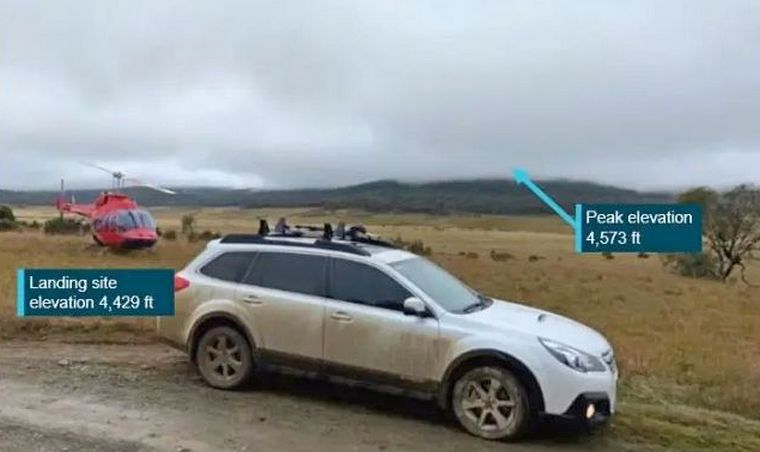 Weather-related accidents remain one of the most significant causes of fatal accidents in general aviation, says Australian Transport Safety Bureau Chief Commissioner Angus Mitchell. Mitchell reiterated the concern with the release of the ATSB's final report from the investigation into a fatal helicopter accident in Kosciuszko National Park on 3 April this year. One of seven helicopters taking part in a flying tour, a Bell 206L-4 LongRanger, registered VH-PRW, departed with a pilot and passenger on board, for a visual flight rules (VFR) flight from a private property at Majura, near Canberra, to Mangalore, Victoria, with a planned refuelling stop in Tumut. The weather forecast indicated low cloud, rain and associated reduced visibility on the planned route and two of the helicopters diverted to Wagga Wagga, due to weather while four others landed near Wee Jasper, to Canberra's northwest. The pilot of VH-PRW elected to continue until they encountered poor weather conditions and landed in open terrain alongside Long Plain Road in the Brindabella region, west of Canberra and to the south of Wee Jasper, shortly before noon, the investigation report details." About three hours later, at 14:53 local time, the helicopter departed the interim landing site at low level, in overcast conditions with low cloud and light rain. At about 15:25, recorded data showed that the helicopter commenced a rapid climb and shortly after, entered a steep left descending turn which continued until it impacted terrain at an elevation of 4,501 ft. A search was initiated the next day with the accident site located later that evening. The helicopter was destroyed, and both occupants were fatally injured. The pilot held a private pilot license (helicopter) and did not hold an instrument rating and the helicopter was not approved for instrument flight. "The pilot initially made the right decision and landed the helicopter," noted Mitchell. However, you're only as safe as your last decision and the pilot's then decision to launch again and push on - for reasons that we will never fully comprehend - put the helicopter into a dangerous environment with powerful and misleading orientation sensations and no visual cues. "It is highly likely these cloud and visibility conditions resulted in the pilot experiencing a loss of visual reference and probably becoming spatially disoriented. Tragically, this led to a loss of control of the helicopter and an un-survivable collision with terrain." This investigation report is the second the ATSB has released this month into an accident where a VFR pilot most likely encountered low visibility conditions, before becoming spatially disorientated leading to a loss of control of their aircraft. The ATSB is also currently investigating other fatal accidents where the weather conditions are under consideration, including the collision with terrain of an Airbus Helicopters EC130 T3 near Mount Disappointment, Victoria on 31 March 2022 where a pilot and four passengers were killed. In 2018, following the final report release into another fatal helicopter accident involving VFR into IMC conditions, the ATSB, in conjunction with CASA and the Australian Helicopter Industry Association launched the 'Don't Push it, LAND IT - when it's not right in flight' safety campaign encouraging helicopter pilots to conduct a precautionary landing rather than push on into abnormal situations. "Don't push on," Mitchell urged visual flight rules pilots. "Pushing on into cloud and low visibility when you do not hold the appropriate rating and experience carries a significant risk of severe spatial disorientation and can affect any pilot, no matter what their level of experience." In the decade from 1 Nov. 2012, to 1 Nov. 2022, 97 VFR into IMC occurrences in Australian airspace were reported to the ATSB. Of those, 11 were accidents resulting in 22 fatalities. Mitchell stressed the importance of planning ahead to avoid deteriorating weather. "Ensure you have alternate plans in case of an unexpected deterioration in the weather and make timely decisions to turn back or divert. Know your limits. As a visual flight rules pilot the use of a 'personal minimums' checklist helps to control and manage flight risks through identifying risk factors that include marginal weather conditions." "The ATSB continues to see this category of accident happening," Mitchell noted. In fact, this is the second final report we've published this month into a fatal accident where a visually rated pilot has likely become spatial disorientated and collided with terrain. Please, only fly in environments that do not exceed your capabilities and most importantly, don't push it, land it. Or, just don't go."  USA, Galt Field Airport (10C), Greenwood/Wonder Lake, IL: An Extra EA300LC sustained unreported damage subsequent to impact with trees and terrain near Galt Field Airport (10C), Greenwood/Wonder Lake, Illinois. The sole pilot onboard the aerobatic airplane was fatally injured.  Russia, Okhotsk Airport: Khabarovsk Airlines Antonov An-24RV was supposed to take off on the route to Khabarovsk. On board were 32 shift workers returning home. The aircraft had already taken off and reached a speed of 160 kilometres per hour when the airport controller ordered the pilots to urgently abort acceleration. At the end of the strip was a truck that was working on the construction of new facilities at the Okhotsk airport. The An-24 pilots managed to stop the liner 600 meters from the truck. None of the people on board the aircraft were injured, but the An-24's tyres burst as a result of emergency braking.  USA, Los Angeles-Van Nuys Airport, CA: A Cessna 550 Citation II / Bravo corporate jet subsequent to a nose gear malfunction after take-off, the pilot diverted back to the point of departure and circled over the field for about an hour and 15 min attempting to extend the nose gear and to burn off fuel. The aircraft landed safely on Runway 16R at 17:50 with the nose gear partially extended. The aircraft suffered unreported but apparent minor damage. No injuries to the two occupants. USA, Del Rio International Airport, TX: A Hollan Air LLC Beechcraft 200 Super King Air with seven on board lost altitude from 4,000 to 2,500 feet, due to wind shear. The pilot elected to continue to the destination. During post flight inspection the ground crew reported sheet metal damage to both outer wings. Damage extent unknown at this time. ADS-B data shows a decent rate of over -15,000 ft/min about 3 minutes after departure from Del Rio.   4 DECEMBER 1991 Pan Am, bankrupt since 11 August is finally dissolved after 63 years of operation. Pan American World Airways, originally founded as Pan American Airways and commonly known as Pan Am, was an American airline that was the principal and largest international air carrier and unofficial overseas flag carrier of the United States for much of the 20th century. Founded in 1927 by two former U.S. Army Air Corps majors, Pan Am began as a scheduled airmail and passenger service flying between Key West, Florida, and Havana, Cuba. Under the leadership of American entrepreneur Juan Trippe, in the 1930s the airline purchased a fleet of flying boats and focused its route network on Central and South America, gradually adding transatlantic and transpacific destinations. By the mid-20th century, Pan Am enjoyed a near monopoly on international routes. It led the aircraft industry into the Jet Age by acquiring new jetliners such as the Boeing 707 and Boeing 747. Pan Am's modern fleet allowed it to fly larger numbers of passengers, at a longer range and with fewer stops than rivals.[9] Its primary hub and flagship terminal was the Worldport at John F. Kennedy International Airport in New York City. Beginning in the mid-1970s, Pan Am began facing a series of challenges both internal and external, along with rising competition from the deregulation of the airline industry in 1978. After several attempts at financial restructuring and rebranding throughout the 1980s, Pan Am gradually sold off its assets before declaring bankruptcy in 1991. By the time it ceased operations, the airline's trademark was the second most recognised worldwide and its loss was felt among travellers and many Americans as signifying the end of the golden age of air travel. .jpg)  Van's RV7 to Khubu Island, Botswana for the Race for Rhinos Google Banner Ad  |
                               |
 |
 |

Copyright © Pilot's Post PTY Ltd
The information, views and opinions by the authors contributing to Pilot's Post are not necessarily those of the editor or other writers at Pilot's Post.